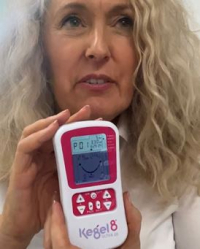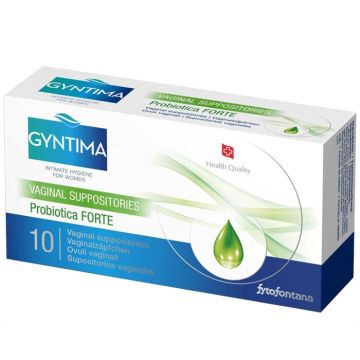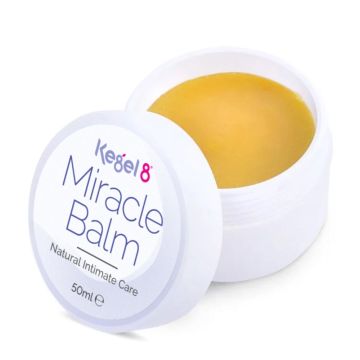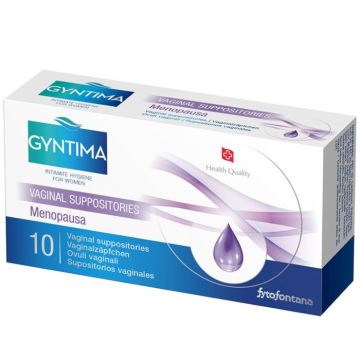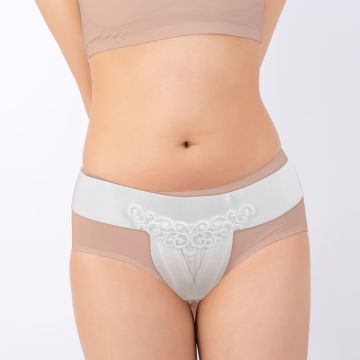
Perineal massage is a technique commonly used during pregnancy to help prepare the perineum for childbirth. The perineum is the area of skin and tissue between the vagina and the anus. This area can sometimes become stretched and may tear during childbirth, particularly if the baby's head is large or the birth happens quickly.
Perineal massage involves gently massaging and stretching the perineal tissue in order to increase its flexibility and elasticity, which theoretically reduces the likelihood of tearing during childbirth. The massage is typically performed by the pregnant person or their partner, and it's recommended to start around the 34th week of pregnancy.
Here's our Easy to Follow guide on how to do perineal massage using Kegel8 Miracle Balm:
Clean Hands: Before starting, make sure your hands are clean.
Relaxation: Find a comfortable and relaxing environment. You might consider using a mirror to help see what you're doing.
Natural Perineal Massage Balm: Apply a light covering of natural balm onto your thumbs and the perineal area.
Gentle Pressure: Insert your thumbs about an inch into the vagina, pressing downwards towards the rectum. Gently massage the lower part of the vaginal opening, applying pressure both downwards and outwards. This helps stretch and relax the tissues.
Clockwise Motion: Use a U-shaped movement with your thumbs to gently stretch the tissue in different directions. You can also try a "clockwise" movement, starting at 6 o'clock and moving to 3 o'clock, then 9 o'clock, and back to 6 o'clock. This helps to stretch the perineal muscles evenly.
Pressure and Relaxation: Apply gentle pressure for around 2 minutes, and then release for 1-2 minutes to allow the tissue to relax.
Frequency: Ideally, perform the massage once a day. Consistency is key for gradually increasing flexibility.
Alternatively you can ask your partner to do the perineal massage for you,
Deciding whether to ask your partner for a perineal massage during pregnancy is a personal choice that should be based on your comfort level, communication with your partner, and mutual understanding. Here are some considerations to help you make an informed decision:
Comfort and Communication: It's important to have open and honest communication with your partner about your feelings and preferences. If you're comfortable discussing intimate matters like perineal massage and your partner is willing to listen and understand your needs, it could be a positive experience.
Willingness and Consent: Your partner should be willing to engage in perineal massage without feeling pressured. Make sure both of you are on the same page and that your partner is comfortable with the idea.
Education: Ensure that your partner understands what perineal massage entails, its potential benefits, and the proper technique. This can help alleviate any concerns or uncertainties they might have.
Respect Boundaries: If your partner is open to the idea but expresses concerns or discomfort, respect their feelings. It's crucial that both partners feel comfortable and respected throughout the process.
Alternative Options: If your partner is not comfortable performing the massage or if you prefer to keep this aspect of pregnancy preparation separate from your relationship, you can consider performing the massage on your own as we've shown above.
Personal Comfort: Ultimately, the decision should be based on what makes you feel most comfortable and supported. If you're unsure, take your time to think about it and discuss your thoughts with your partner.
Clinical Evidence
Royal College of Obstetricians & Gynaecologists - Reducing your risk of perineal tears From 35 weeks onwards, you or your partner can use daily perineal massage until your baby is born which may reduce your risk of tearing. This is particularly beneficial for first-time mothers. You may choose to ask your partner to help you with this. https://www.rcog.org.uk/for-the-public/perineal-tears-and-episiotomies-in-childbirth/reducing-your-risk-of-perineal-tears/
NICE says Perineal massage in the weeks leading up to delivery helps some women avoid episiotomy. Perineal massage, which can be done by pregnant women or their partners, is simple and non-invasive. It seems to work best for women having their first baby, mostly by reducing their risk of an episiotomy. Massaging once or twice a week for about four weeks seems to be enough. The authors say the trials were methodologically good, so their combined results are likely to be sound, although further trials are needed in women who have given birth vaginally before. https://www.ncbi.nlm.nih.gov/pmc/articles/PMC1403252/
NHS Preventing a perineal tear - Episiotomy and perineal tears https://www.nhs.uk/pregnancy/labour-and-birth/what-happens/episiotomy-and-perineal-tears/#preventing-a-perineal-tear
NCT.org How to do perineal massage; a step by step guide. https://www.nct.org.uk/pregnancy/worries-and-discomforts/common-discomforts/how-do-perineal-massage-step-step-guide




